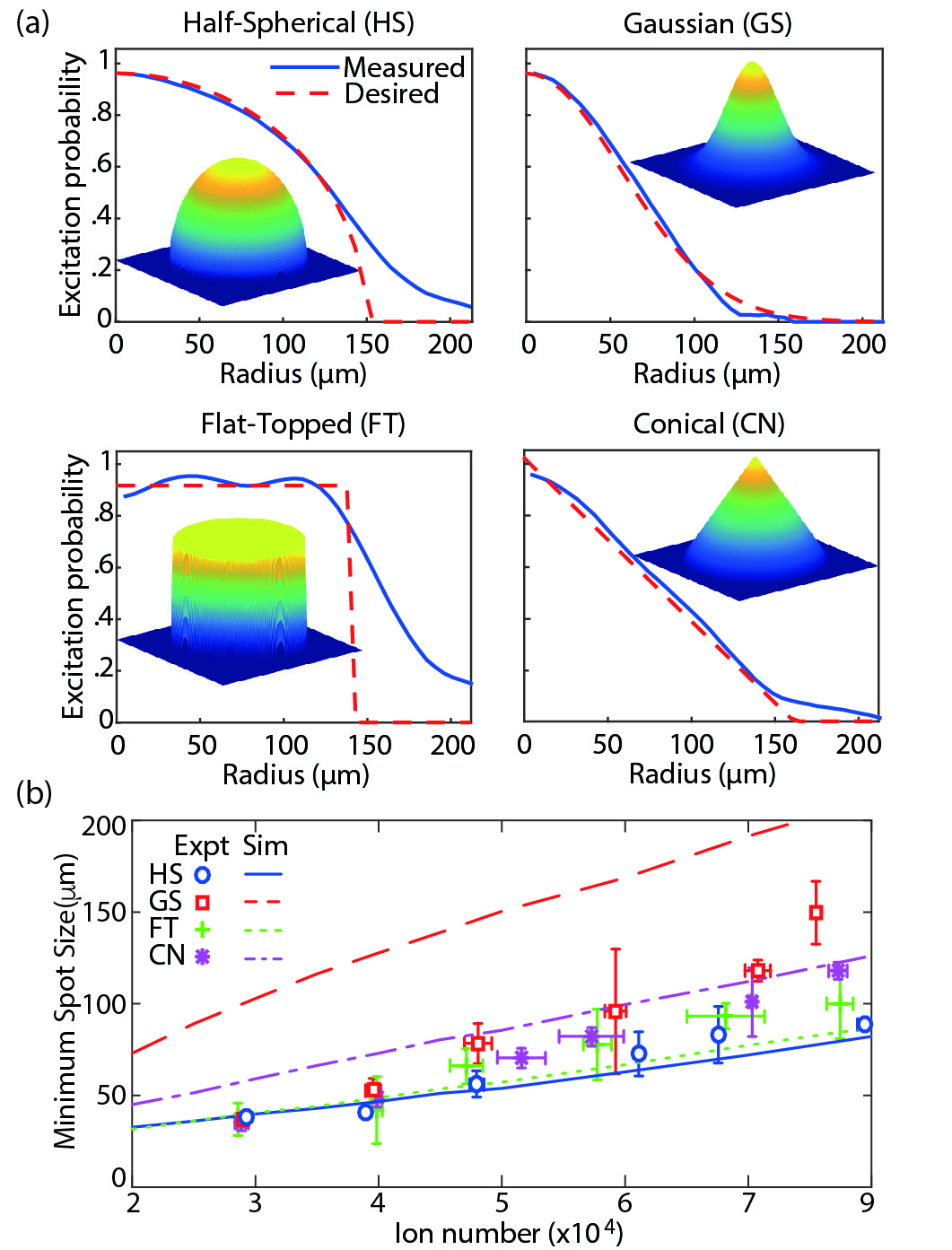New Publication: “Suppression of Emittance Growth Using a Shaped Cold Atom Electron and Ion Source”
D. J. Thompson, D. Murphy, R. W. Speirs, R. M. W. van Bijnen, A. J. McCulloch, R. E. Scholten, B. M. Sparkes Physical Review Letters 117, 193202 (2016) [pdf]
Imaging with electron and ion beams is slow because the charges repel each other. Beams of electrons or ions diffuse because the particles repel each other via the Coulomb force, effectively reducing the focus and resolution for higher charge density beams. To image dynamic processes, single bunches of approximately 1 million electrons must be focused onto a sample that is only a few tens of micrometres across, to perform single-shot ultrafast coherent electron diffraction.
A source of electrons or ions based on photoionisation of cold atoms provides us with the ability to precisely shape the initial bunch by controlling the laser beam profiles used to ionise the atoms. For certain shapes, the Coulomb-driven expansion is linear, allowing us to reverse the expansion and more tightly focus the high-density beam. In this paper we present the first results demonstrating the reversal of the Coulomb explosion using three-dimensional shaping of the initial bunch, and show how certain distributions focus much better than others. These results have a significant impact for applications ranging from femtosecond chemistry to materials science and rational drug design.
(a) Measured radially averaged excitation laser profiles (solid lines) and desired profiles (dashed lines), plotted as the relative excitation probability. These correspond to the transverse density profile of the electron and ion bunches created via photo-ionisation. Insets show desired transverse bunch density profiles as shaded false-colour renderings. (b) Measured minimum focused spot sizes for the different shaped distributions as a function of the number of ions present (points) and simulated focusability (lines).
